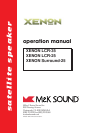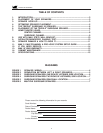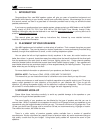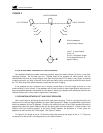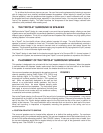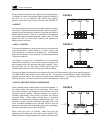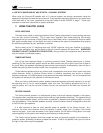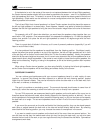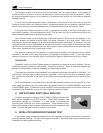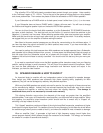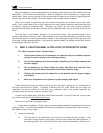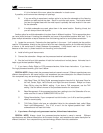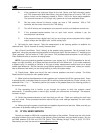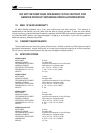
Play a familiar CD or DVD with steady, consistent bass content through your system. Listen carefully
to the "mid-bass" region of 75 - 125 Hz. This is the part of the spectrum where electric or string basses
and drums predominate. Then reverse the phase of either the subwoofer or BOTH Main speakers.
If your Subwoofer has a PHASE switch on its back panel, move it either from (+) to (—) or vice versa.
If your Subwoofer does not have a PHASE switch, it takes a bit more work. You will have to change
the Positive and Negative speaker inputs on the back of BOTH Main speakers.
You can do this at the back of both Main speakers, or at the Subwoofer's TO SPEAKERS terminals,
but never at both locations. The lead that was on the Positive (+) terminal should be switched to the
Negative (—) terminal, and vice versa. When switching speaker wires, take care to protect your amplifier.
Make sure that the wires do not touch each other when you are making the switch. As a safety measure,
we suggest that you turn the amplifier off before making the switch.
Now listen to the same musical passage as you did earlier, concentrating on the mid-bass region. If
you hear less bass, the original connection (or switch position) was correct. If you hear more bass, the
new connection (or switch) is correct.
You need to perform this test because when Main speakers are located separate from a Subwoofer,
each speaker is at a different distance from your ear. In some cases, the difference will be just enough so
that the output from the Subwoofer arrives out of phase with the output of the Satellites. When this
happens, that critical mid-bass is actually cancelled. You should re-do this test any time you move your
speakers.
If you want to experiment further, move the Main speakers either towards or away from your listening
position, making changes in small increments. This will "focus" the system's sound to its optimum. When
you hear the best combination of stereo image localization and maximum impact and output in the
mid-bass, you have the ideal location.
10. SPEAKER DAMAGE & HOW TO AVOID IT
An important factor to consider with any loudspeaker system is the potential for speaker damage.
Even though your M&K speakers have extremely high power handling ability (especially for Main
speakers), they still can be damaged by relatively low powered amplifiers.
While very few M&K speakers are actually returned for service, the vast majority of those returned are
not for manufacturing defects. Instead, they are returned because they have been over driven, almost
always because the amplifier or receiver used was driven into clipping distortion. This damage is
considered abuse, and is not necessarily covered under warranty.
This clipping distortion occurs when the demands of the music are greater than the amplifier's
available power. It can occur at 20 watts with a small amplifier, or at 400 watts with a large amplifier. When
this happens, the amplifier's output waveform (which should look like a smooth arc) is "clipped" off,
exhibiting a flat top instead of the arc.
This "clipped" waveform contains multiples of the original amplified frequencies, sometimes at higher
levels than the original signal itself. For tweeters, this can be very damaging, as this distortion is well above
the audible range (where you are unable to hear it), and where the tweeter is most vulnerable to damage.
When an amplifier "clips", it generates a high level of high frequency energy (much higher than
normal program material) which passes through the crossover to the tweeter. This energy can overheat
the tweeter in a matter of seconds and destroy it.
SATELLITE SPEAKER
11



